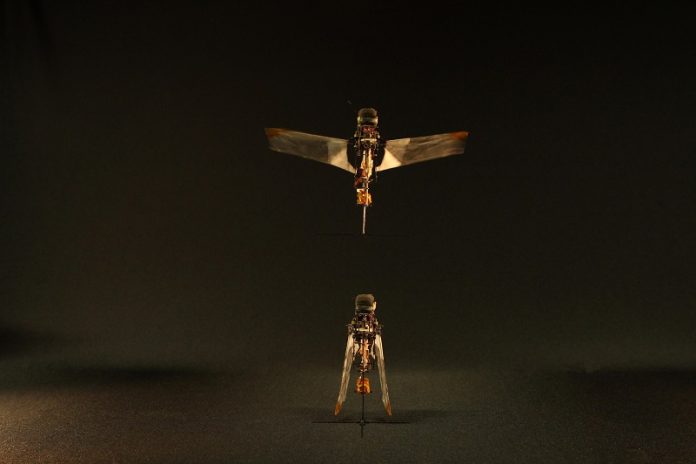
Researchers have discovered how rhinoceros beetles use a passive method to deploy and retract their wings, a finding that could enhance the design of flying micromachines.
This study, published in Nature, reveals that the beetles’ wing movements don’t require muscular activity, opening new possibilities for small, efficient flying robots.
Beetles are unique among flying insects due to their complex wing structure.
They have two sets of wings: the hardened forewings, called elytra, and delicate, membranous hindwings.
While scientists have extensively studied the intricate folds of these wings, how beetles deploy and retract their hindwings remained unclear until now.
Previous theories suggested that thoracic muscles drive the movement of the beetle’s hindwings, but there was no experimental evidence to confirm this. To investigate further, Hoang-Vu Phan and his team used high-speed cameras and created a flying robot that mimics the beetle’s wing mechanism.
The researchers found that rhinoceros beetles rely on passive mechanisms, including their elytra, to control their wings.
The deployment of the hindwings is a two-phase process. First, the elevation of the elytra partially releases the hindwings in a spring-like manner. Then, a flapping motion brings the hindwings into a raised flight position.
The elytra also play a crucial role in passively lowering the hindwings into a resting position.
Inspired by these observations, the team created microrobots that mimic the beetle’s passive wing deployment and retraction. These robots successfully took off and maintained flight, demonstrating the potential of this design for small flying machines.
This discovery suggests that incorporating the beetle’s passive wing mechanisms into robot design can improve the capabilities of small robots, especially those that need to navigate confined or cluttered spaces. By using less energy and requiring fewer mechanical parts, these beetle-inspired robots could be more efficient and versatile.
The study highlights the importance of learning from nature to develop advanced technologies. The passive wing mechanism of rhinoceros beetles could lead to significant advancements in the field of microrobotics, making these tiny machines more effective for various applications.



